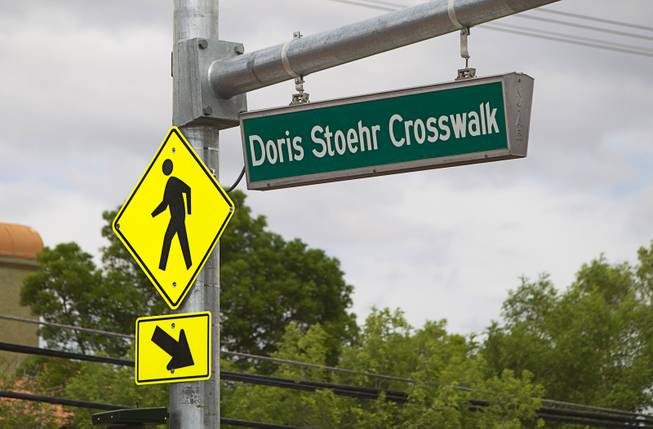
A sign hangs over a new crosswalk on North Decatur Boulevard between Vegas Drive and Lake Mead Boulevard Monday, April 8, 2013. The crosswalk is dedicated to Doris Stoehr, a resident of Las Vegas Manor senior complex, who was killed crossing the boulevard in February.
Sunday, March 2, 2014 | 2:01 a.m.
Consider an activity so dangerous it resulted in an average of one death every six days last year in the Las Vegas Valley.
Sixty people killed and dozens more hospitalized, many with critical injuries.
Knowing the risk, would you take it?
Chances are, you already do — every time you cross a street.
The 60 fatalities were pedestrians on Clark County roads. They died in crosswalks and open lanes of traffic, at all hours of the day and night, struck by vehicles ranging in size from coupes to buses.
RTC has a message for drivers: You don’t own the road
The word “road” is getting new meaning in the valley.
Traffic engineers want people to stop associating roads with vehicles, and consider them pathways for all moving activities. In other words, they want roads to become safe havens for cars, buses, bicycles and pedestrians.
To that end, Clark County and the cities of Las Vegas, Henderson, North Las Vegas, Boulder City and Mesquite last year adopted a design philosophy called “Complete Streets.” Led by the Regional Transportation Commission, Complete Streets outlines design guidelines for roadways.
“It’s not a hard requirement,” RTC Director of Engineering Services David Swallow said. “It’s meant to be another tool in the toolbox.”
One recommendation is adding “amenity zones” next to streets for landscaping, streetlights and trash cans that also would create a barrier between the road and the sidewalk.
Las Vegas has started implementing some of the designs downtown near the RTC’s main transit center. Updates include wider sidewalks, green bike lanes, upgraded lighting and amenity zones.
Streets getting makeovers
Several Complete Streets projects are in motion.
The Regional Transportation Commission and city of Las Vegas are overseeing two projects downtown: one along 1st Street and the other on Garces Avenue. Both will improve bicycle and pedestrian access between the Bonneville Transit Center and parts of downtown.
A fuel tax increase approved by the Clark County Commission last fall also paved the way for a list of projects that could include Complete Streets elements. There are 23 projects slated for Clark County, Henderson and North Las Vegas. They include:
• Center Street from Burkholder Boulevard to Lake Mead Parkway in Henderson
• Losee Road at Lone Mountain Road in North Las Vegas
• Paradise Road and Swenson Street from Russell Road to Sahara Avenue in Clark County
• Desert Inn Road from Paradise Road to Mojave Road in Clark County
Walking has become one of the perils of living in Las Vegas. In 2012, the last full year for which national statistics are available, pedestrians died at a higher rate in Clark County than in the counties that include Manhattan, Los Angeles, Phoenix, Atlanta, Houston, Chicago and Dallas.
And the danger is growing. Pedestrian deaths have gone up for the past two years.
After pedestrian deaths spiked in late 2011 and early 2012, law agencies and community leaders responded by strengthening enforcement, holding public meetings and trying to raise awareness of the problem.
The result? It didn’t make a dent. In fact, the number of deaths kept skyrocketing.
The Nevada Office of Traffic Safety reported 43 deaths in Clark County in 2012. An examination by The Sunday of records from the Nevada Highway Patrol, Metro Police, North Las Vegas and Henderson police showed that there were 60 fatalities in 2013.
So what’s going on? And who or what is to blame?
There are a lot of answers depending on who’s talking, but most everyone agrees on one key contributor: Las Vegas, as a whole, just isn’t paying enough attention.
Drivers don’t watch closely enough for pedestrians. And pedestrians aren’t mindful enough of their own safety.
Adding to the danger, the valley’s rapid growth during the boom contributed to an infrastructure that’s decidedly not pedestrian friendly — wide multi-lane streets, long stretches of road between crosswalks and many streets with 45 mph speed limits.
Transportation authorities can’t engineer their way out of the problem, and design fixes aren’t cheap.
Las Vegas Mayor Carolyn Goodman said in her recent State of the City address that the city is embarking on a five-year, $3.5 million program to improve pedestrian safety.
But break down the investment. It averages $700,000 a year.
A Nevada Department of Transportation project to install new traffic lights and make other safety upgrades at a single intersection at Blue Diamond and Cimarron roads is expected to cost at least $1 million.
Last year’s 60 fatalities weren’t isolated to a specific neighborhood or region. They happened all across the valley — on a residential street in a master-planned community, along a major arterial in West Las Vegas, on Interstate 15 next to the Strip and near the bustling perimeter of UNLV.
Authorities admit it’s all but impossible to pinpoint an exact cause for the increase. Is it symptomatic of a still-down economy that has forced more people to walk and use public transportation? Or is it a sign of the region climbing back to prosperity with more residents out and about?
What we do know is this: Traffic fatalities are cyclical. Clark County pedestrian deaths spiked at 51 in 1996 before dropping to 30 two years later.
When pedestrian deaths soar, “people start to pay a little more attention,” said Capt. Mark Tavarez, head of Metro’s traffic bureau.
There’s good reason to be more mindful. Motorists at the very least face fines, not to mention the possible emotional trauma of killing or seriously injuring someone.
And there are significant medical costs attached to pedestrian accidents. University Medical Center, the county’s only publicly funded hospital, treated 244 pedestrians struck by vehicles in 2012. Of those patients, 24 died, seven went to nursing homes, 20 went to rehabilitation centers and 193 went home, according to the National Trauma Data Bank. Seventy-eight suffered injuries considered “major trauma.”
There’s a public financial impact, as well. Injured pedestrians who wound up at UMC racked up $18 million in medical bills in 2012. Among them, 176 were uninsured, according to hospital data.
Alcohol played a role in several of the fatalities, with pedestrians being too drunk to safely navigate roads and impaired drivers failing to spot people walking.
The good news is that authorities say alcohol involvement isn’t any more prevalent in Las Vegas than in other cities. The bad news is that a 2013 report from the National Highway Traffic Safety Administration said 35 percent of the pedestrians who died on U.S. roads in 2011 had blood-alcohol levels of 0.08 or higher, as did 13 percent of drivers involved.
In addition, Tavarez said distracted walking has become an epidemic, with pedestrians being too engrossed in their smartphones to pay proper attention to safely crossing a street. Such a scenario has resulted in several deaths in Las Vegas.
On the flip side, many motorists treat pedestrians as second-class citizens and ignore their right of way, said Erin Breen, director of UNLV’s Safe Community Partnership.
Perhaps good, old-fashioned common sense is the best solution.
“If people drove more courteously and if pedestrians took their mortality into their own hands, we could stop this,” Breen said.
2013 was “an increasingly frustrating year,” she added.
From Jan. 1 to Feb. 20 this year, there were three fatal accidents in Clark County this year. In the same period during 2013, there were seven fatalities.
The tally has begun. Is change in the air?
-
Pedestrian risk especially acute for senior citizens
Doris Stoehr took her last step Jan. 10, 2013, trying to cross Decatur Boulevard north of Vegas Drive.
A pickup truck struck and killed the 83-year-old, who wasn’t in a marked crosswalk.
Stoehr was the first elderly person killed in the valley last year, but more than a dozen other older residents would die the same way before the year ended.
Nationally, people 65 and older are more likely to die while walking than any other age group. In 2011, senior pedestrians had the highest fatality rate, with an average of 2 residents per 100,000 dying, according to the National Highway Transportation Safety Administration.
Las Vegas has been part of the trend.
More than a third of Las Vegas pedestrians killed during a nearly four-year period were 60 or older, according to Metro Police. The data included pedestrian deaths from January 2010 through November 2013.
Last year, Henderson’s only two pedestrian deaths were elderly residents: a 75-year-old man and 70-year-old woman.
“It’s just a sad tale,” said Erin Breen, a traffic safety advocate and director of UNLV’s Safe Community Partnership. “I would hope the public would rally around the elderly like they do the kids.”
Authorities point to a variety of factors that heighten seniors’ risk, including limited mobility and sight, frailty and an inability to drive.
Last year, Breen began speaking about pedestrian safety at senior centers across the valley. She hopes to see more community involvement and nonprofit transportation for seniors, especially as the valley’s population ages.
The U.S. Census Bureau predicts that almost 24 percent of Nevada residents will be older than 60 by 2030.
“The aging population of Las Vegas has a huge impact on transportation,” Breen said. “It has kind of been the elephant in the room.”
-

Not just statistics: Sherri Bush
Victim’s mother
On Feb. 16, 2013, a vehicle struck and killed Bush’s son, 25-year-old James Spagnoli, as he tried to cross Flamingo Road between El Capitan Way and Durango Drive outside of a marked crosswalk.
“My son was a big prankster. His friend, who was living with us at the time, came running through the door and said that James had been hit by a car. I didn’t believe him. I was looking out the front door, and I could see in the clouds the reflection of the red and blue lights. I just dropped to my knees and screamed.
“I got to go in and see him before he went into surgery for the second time. He was squeezing my hand really hard, so I think he knew I was there. At that point, I thought he was going to make it. After the surgery, a doctor came out to tell me he didn’t.
“I never in a million years thought he wouldn’t return from walking to the store.
“I know it’s probably my son’s fault. He should have been in a crosswalk. I just want some kind of closure as to what really happened. He wouldn’t just run in front of a car. He wouldn’t do that.”
-

Not just statistics: Anne-Marie Ricci
Injured pedestrian
On Jan. 1, 2013, a motorist struck Ricci, now 17, and her boyfriend, 18-year-old Jesse Hill, as they were walking to a neighborhood park. Hill died from his injuries. The crash happened near the intersection of Black Oaks Street and Gliding Eagle Road in North Las Vegas.
“We did everything we were supposed to be doing. It was daylight. You could see us. We were on a sidewalk. The next thing I remember is waking up at the hospital.
“There were two teenage boys in the car, about 19 and 18 years old at the time. The driver had marijuana metabolites and alcohol in his system. He was going between 60 and 70 mph, and he hit us from behind. We didn’t even see him coming.
“Day by day, it slowly hit me that the guy I loved no longer was here. I know he wouldn’t want me to be so sad all the time, so I’m fighting for both of us.
“I fractured the right side of my pelvis. They put in a metal plate and six screws. I had to learn how to walk again. I broke my left clavicle. I fractured my fifth cervical vertebra, which was really close to making me paralyzed. On Feb. 13, I went to my neurosurgeon for a check-up. He didn’t like the way my neck looked. I didn’t have my boyfriend on Valentine’s Day, but I had a neck surgery.
“I had lacerations all over my body, to my liver and right kidney and internal bleeding in my head. I have a traumatic brain injury. I see a doctor once a week to try to get my memory back.
“The way I’ve recovered from it? My family and friends have been there for me. My mom and I have stayed up late talking about Jesse and me and what happened.
“That’s the way I’ve grieved — just talking about it.”
-
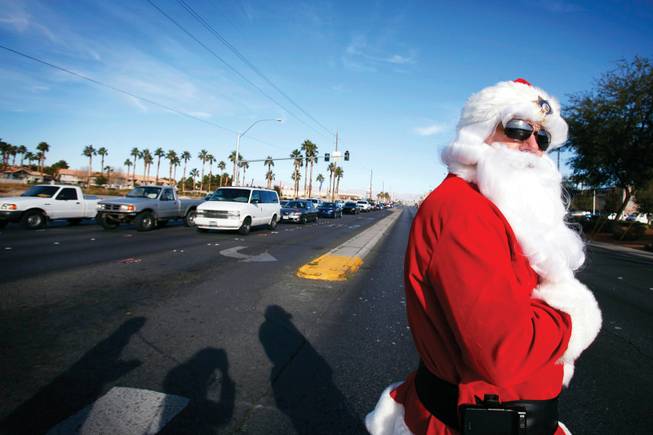
Not just statistics: Michael Lemley
Metro police officer
Since 2010, Lemley has dressed up in costume and trotted through crosswalks as part of “pedestrian decoy enforcement,” aimed to bring awareness to pedestrian safety. Motorists who fail to stop for him are ticketed. For Thanksgiving, he dressed as a turkey; before Christmas, as Santa Claus. Despite the costumes, a surprising number of motorists blow by him.
“When I was doing the plainclothes decoy at Charleston and Yew, I was literally standing on the lane delineation markers and had cars 40 mph — 20, 30 at a time — going by me. And I’m standing there hoping and praying that a mirror doesn’t hit me.
When I was doing the leprechaun costume on St. Patrick’s Day, I’m doing the crosswalk at Charleston and 8th. It’s a marked crosswalk, but, again, you’ve got speed. I had a white work van actually lock up his brakes and come to a sliding stop. I had to jump out of the way. When we pulled him over, he was driving under the influence in his work truck.
“There are all kinds of near misses. When we step out into the road, it doesn’t matter if you are wearing a vest or not. A 45-mph vehicle weighing 2,000 pounds is going to hurt. We’re not Superman.”
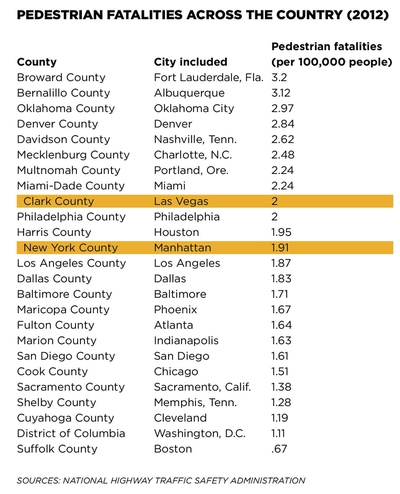
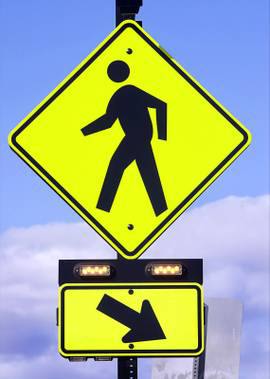
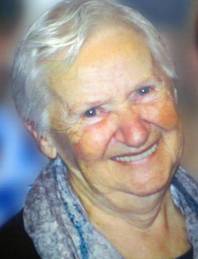




Join the Discussion:
Check this out for a full explanation of our conversion to the LiveFyre commenting system and instructions on how to sign up for an account.
Full comments policy